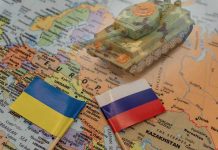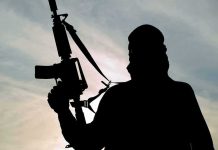
Russia’s military machine grinds forward in Ukraine while NATO watches with alarm, predicting the conflict could spill beyond Ukrainian borders within five years.
Key Takeaways
- NATO officials predict a “stressful and difficult summer” for Ukraine, with Russia making slow but steady territorial gains despite suffering massive casualties.
- Russia has prioritized war financing over economic health, draining its sovereign wealth fund from $150 billion to $37 billion, but can still sustain military operations until at least 2027.
- Russian weapons production outpaces all 32 NATO allies combined, with significant output of tanks and artillery shells despite Western sanctions.
- NATO Secretary-General Mark Rutte and other officials warn Russia may not stop at Ukraine, potentially testing NATO’s Article 5 collective defense guarantee within five years.
- The Trump administration has shown little interest in sending additional weapons to Ukraine, creating uncertainty about future Western support.
Russia’s Slow Advance and Mounting Casualties
Russia’s summer offensive along Ukraine’s 1,000-kilometer frontline continues to produce limited territorial gains at enormous human cost. Since January 2024, Russian forces have seized less than 1% of Ukrainian territory, advancing at an average rate of just 50 meters per day in some areas. This pace falls far short of historical offensive operations, highlighting significant operational challenges facing Putin’s military. Despite controlling the skies and possessing superior artillery capabilities, Russian commanders have struggled to translate these advantages into decisive battlefield victories.
NATO officials report Russian casualties are expected to reach one million by summer 2025, including approximately 250,000 fatalities. “The real bottom line is the situation on the battlefield continues to be difficult. Ukraine continues to show a lot of innovative spirit…but we’re in for a stressful and difficult summer,” warned a senior NATO official.
Russia’s Economic Strain and Military Production
Despite crippling Western sanctions, Russia has prioritized military production over civilian economic needs. NATO assessments indicate that Russia’s defense industrial base continues to outpace Western allies, producing tanks, artillery pieces, and ammunition at rates that sustain battlefield operations. The Russian leadership has made the strategic decision to sacrifice long-term economic health for immediate war financing, depleting the country’s sovereign wealth fund while accepting significant budget deficits and labor shortages.
“Industrial capacity is operating at a maximum, but you have labor shortages, significant budget deficits, which are being funded partly by the national welfare fund, but that is starting to run quite low. In fact, the sovereign wealth fund has fallen from $150 billion down to $37 billion. So all this is certainly putting a strain on the Russian economy,” reported a NATO official.
The official further explained, “Essentially, the Kremlin is making trade-offs for long-term economic health back in Russia, for the short-term financing of this war.” This approach has allowed Russia to maintain military operations that NATO believes can continue until at least 2027, despite the economic strain on its civilian population. More alarming for NATO planners is Russia’s military spending, which now exceeds that of all 27 EU nations combined.
NATO’s Growing Concern About Russian Aggression
NATO leadership has escalated warnings about the threat Russia poses beyond Ukraine. Secretary-General Mark Rutte recently stated that Russia could attack a NATO ally within the next five years, while EU foreign policy chief Kaja Kallas highlighted the existential nature of the Russian threat. These concerns reflect growing anxiety among Western military planners about Russia’s willingness to challenge NATO directly, potentially through cyber attacks, sabotage, or conventional military operations.
“Russia is already a direct threat to the European Union….This is a long-term plan for long-term aggression. You don’t spend that much on military if you do not plan to use it,” warned Kaja Kallas, noting that Russia now spends more on defence than its own health care, education and social policy combined.
A recent Russian missile attack on a Kyiv apartment building that killed 28 civilians—the deadliest strike on the Ukrainian capital this year—has reinforced NATO’s concerns about Russia’s willingness to target civilian infrastructure. Such attacks contradict Russian claims that their military operations avoid civilian casualties and suggest an escalation in tactics that could eventually extend to NATO territories. Meanwhile, diplomatic efforts to negotiate a ceasefire have made little progress, with NATO officials expressing doubt about Russia’s interest in good-faith negotiations.
Uncertain Future for Western Support
President Trump’s administration has shown limited enthusiasm for continued weapons transfers to Ukraine, creating significant uncertainty about the future of Western military support. At the recent NATO Summit, Ukrainian President Volodymyr Zelenskyy made urgent appeals for additional assistance, warning that Russian aggression would not stop with Ukraine. However, these appeals have met with a mixed response from Western leaders, many of whom face domestic political pressures to reduce military aid to Ukraine.
The increasing friction between Russia and NATO occurs against a backdrop of shifting global alliances. Iran’s military assistance to Russia has been crucial for drone and missile production, though regional conflicts involving Iran and Israel may eventually disrupt these supply chains. Meanwhile, China continues to provide economic support to Russia without directly supplying weapons, helping Moscow circumvent Western sanctions while maintaining plausible deniability about direct military assistance.











